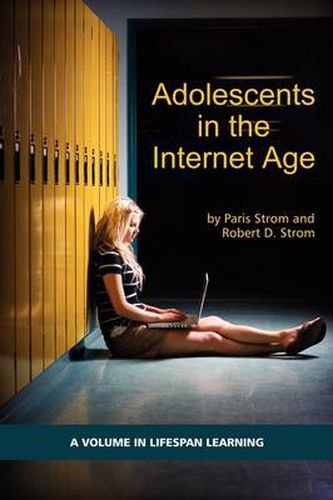Readings Newsletter
Become a Readings Member to make your shopping experience even easier.
Sign in or sign up for free!
You’re not far away from qualifying for FREE standard shipping within Australia
You’ve qualified for FREE standard shipping within Australia
The cart is loading…






This title is printed to order. This book may have been self-published. If so, we cannot guarantee the quality of the content. In the main most books will have gone through the editing process however some may not. We therefore suggest that you be aware of this before ordering this book. If in doubt check either the author or publisher’s details as we are unable to accept any returns unless they are faulty. Please contact us if you have any questions.
The tools of communication technology have transformed socialization and education of adolescents. They are the first generation to be growing up with the Internet, cell phones, iPods, computers, electronic hand helds and satellite television. Building friendships and social networks are common experiences online. Most teenagers prefer the Internet as the main source of learning. Because students know things that are unknown to teachers, their traditional relationship can shift to provide greater benefit for both parties if they pursue reciprocal learning. This book introduces a new set of core topics to reflect current conditions of the adolescent environment instead of life in yesterday’s world. The discussion shows how the Internet can be used to practice skills needed for learning and working in the future. Visual intelligence and media literacy are essential for critical thinking. Creative thinking should be encouraged in classrooms and become a more common outcome of schooling. Social maturity can improve when networking includes interaction with adults as well as peers. Prevention of cheating and cyber abuse presents unprecedented challenges. Understanding sexuality, nutrition, exercise, and stress contribute to a healthy lifestyle. Teamwork skills, peer evaluation, and exercises for cooperative learning groups are presented. Classroom applications address the practical concerns of teachers. The book is organized in four domains of identity, cognitive, social, and health expectations. Each chapter includes student polls to assess conditions of learning and websites that augment the book content. The target audience is prospective teachers, in-service teachers, and school administrators studying adolescent development on campus and by distance learning.
$9.00 standard shipping within Australia
FREE standard shipping within Australia for orders over $100.00
Express & International shipping calculated at checkout
This title is printed to order. This book may have been self-published. If so, we cannot guarantee the quality of the content. In the main most books will have gone through the editing process however some may not. We therefore suggest that you be aware of this before ordering this book. If in doubt check either the author or publisher’s details as we are unable to accept any returns unless they are faulty. Please contact us if you have any questions.
The tools of communication technology have transformed socialization and education of adolescents. They are the first generation to be growing up with the Internet, cell phones, iPods, computers, electronic hand helds and satellite television. Building friendships and social networks are common experiences online. Most teenagers prefer the Internet as the main source of learning. Because students know things that are unknown to teachers, their traditional relationship can shift to provide greater benefit for both parties if they pursue reciprocal learning. This book introduces a new set of core topics to reflect current conditions of the adolescent environment instead of life in yesterday’s world. The discussion shows how the Internet can be used to practice skills needed for learning and working in the future. Visual intelligence and media literacy are essential for critical thinking. Creative thinking should be encouraged in classrooms and become a more common outcome of schooling. Social maturity can improve when networking includes interaction with adults as well as peers. Prevention of cheating and cyber abuse presents unprecedented challenges. Understanding sexuality, nutrition, exercise, and stress contribute to a healthy lifestyle. Teamwork skills, peer evaluation, and exercises for cooperative learning groups are presented. Classroom applications address the practical concerns of teachers. The book is organized in four domains of identity, cognitive, social, and health expectations. Each chapter includes student polls to assess conditions of learning and websites that augment the book content. The target audience is prospective teachers, in-service teachers, and school administrators studying adolescent development on campus and by distance learning.